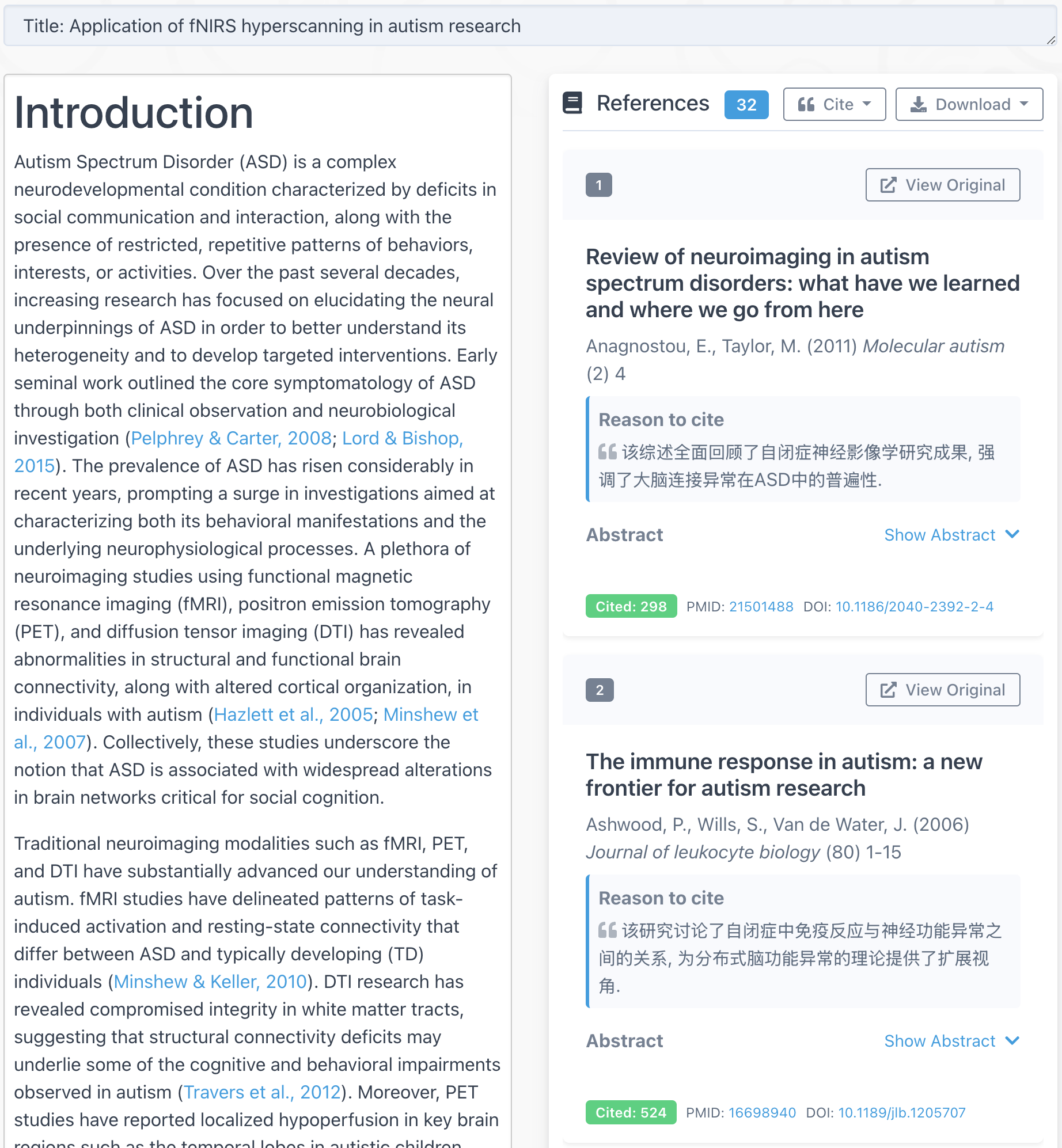Quite often you need to convert the coordinates of some voxels in MNI space to regular matrix coordinates. Below is a script to do so:
%%%%%%%%%%%%%%%%%%%%%%%%%%%%%%%%%%%%%%%%%%%%%%%%%%%%%%%%%%%%%%%%%%%%%%%%%%%%%%%%%%%%%%%
%%% mni2cor
%%%%%%%%%%%%%%%%%%%%%%%%%%%%%%%%%%%%%%%%%%%%%%%%%%%%%%%%%%%%%%%%%%%%%%%%%%%%%%%%%%%%%%%
function coordinate = mni2cor(mni, T)
% function coordinate = mni2cor(mni, T)
% convert mni coordinate to matrix coordinate
%
% mni: a Nx3 matrix of mni coordinate
% T: (optional) transform matrix
% coordinate is the returned coordinate in matrix
%
% caution: if T is not specified, we use:
% T = ...
% [-4 0 0 84;...
% 0 4 0 -116;...
% 0 0 4 -56;...
% 0 0 0 1];
%
% xu cui
% 2004-8-18
%
if isempty(mni)
coordinate = [];
return;
end
if nargin == 1
T = ...
[-4 0 0 84;...
0 4 0 -116;...
0 0 4 -56;...
0 0 0 1];
end
coordinate = [mni(:,1) mni(:,2) mni(:,3) ones(size(mni,1),1)]*(inv(T))';
coordinate(:,4) = [];
coordinate = round(coordinate);
return;
If you need to convert from matrix coordinates to MNI space, then here is the code:
%%%%%%%%%%%%%%%%%%%%%%%%%%%%%%%%%%%%%%%%%%%%%%%%%%%%%%%%%%%%%%%%%%%%%%%%%%%%%%%%%%%%%%%
%%% cor2mni
%%%%%%%%%%%%%%%%%%%%%%%%%%%%%%%%%%%%%%%%%%%%%%%%%%%%%%%%%%%%%%%%%%%%%%%%%%%%%%%%%%%%%%%
function mni = cor2mni(cor, T)
% function mni = cor2mni(cor, T)
% convert matrix coordinate to mni coordinate
%
% cor: an Nx3 matrix
% T: (optional) rotation matrix
% mni is the returned coordinate in mni space
%
% caution: if T is not given, the default T is
% T = ...
% [-4 0 0 84;...
% 0 4 0 -116;...
% 0 0 4 -56;...
% 0 0 0 1];
%
% xu cui
% 2004-8-18
% last revised: 2005-04-30
if nargin == 1
T = ...
[-4 0 0 84;...
0 4 0 -116;...
0 0 4 -56;...
0 0 0 1];
end
cor = round(cor);
mni = T*[cor(:,1) cor(:,2) cor(:,3) ones(size(cor,1),1)]';
mni = mni';
mni(:,4) = [];
return;



thanks – exactly what I needed!
My transformation matrix was the following:
[ans.hdr.hist.srow_x; ans.hdr.hist.srow_y; ans.hdr.hist.srow_z; 0 0 0 1]
Dear Xu,
thanks for the code. Can you give me a hint how to obtain the transformation matrix? I know that I have to define several fiducials on my images (like anterior and posterior commissure), but I don’t know of any convenient way (i.e. software) to do this and get mni coordinates from voxel indices. Are you aware of a simple way to do that?
Thanks a lot,
Michael
P.S.: Great motto for your blog 🙂
@Michael
If you have an image, then use V=spm_vol(‘example.img’); then V.mat is T
@Xu Cui
As far as I know, this only results in valid mni coordinates, as long as the image is in alignment with normal space, i.e., with MNI152 – in all other cases it will give me an arbitrary transformation matrix.
Dear Xu,
thanks, very helpful. This helps me a lot! One related question: I have a set of images that are in a coordinate space and a 4×4 transformation matrix that I can use to covert the cooridnates into mni [3 0 0 81; 0 3 0 -115; 0 0 3 -70; 0 0 0 1]; I could now apply this transformation while looping over all voxels, but that seems cumbersome. Is there a function that could transform the whole 3D (or 4d – 3D +timeseries) from its space into MNI?
Best, Ralf
@ralf
This function can take Nx3 matrix (N voxels at the same time)
Dear Dr. Cui,
I obtained a transformation matrix from an image preprocessed in SPM (normalized to MNI template already) but when I use this function, the location showing up in the mask is L/R flipped: e.g., in MNI coordinate it was on the left but after putting into the matrix space, it showed up on the right of the image. Is there a parameter i should obtain from spm_vol to know if my data is L/R flipped?
Thanks!
Dear Dr. Cui,
I have a problem. I first time have to MNI coordinates to matrix space convert. What am I going to change in the code?
When entered values mni e.g. -41 -4 10 I have error and the program does not work.
Is it working for lots of coordinates?
function coordinate=mni2cor(-41,-4,10), T)
if isempty(mni)
coordinate= [];
return;
end
if nargin ==1
T = …
[-4 0 0 -84; …
0 4 0 -116;…
0 0 4 -56;…
0 0 0 1];
end
coordinate=[mni(:,1) mni(:,2) mni(:,3) ones(size(mni,1),1)]*(inv(T))’;
coordinate(:,4)=[];
coordinate=round(coordinate);
return;
Best,Ila
@Ila
It does work for a lot of coordinates.
Your input should be Nx3 matrix, each row is a coordinate.
Dear Dr. Cui,
Thank you for your answer. I understand what do you write, but can you give me an example on one of coordination? Unfortunately, it is not clear for me and my friends.
I need easy example how define mni?
These are my hard beginnings..
Best, Ila
@Ilona
mni2cor([-41, -4, 10])
mni2cor([-41, -4, 10; -42, -4, 16])
mni2cor([-41, -4, 10], T) % if you have your own T
Dear Dr. Cui,
Thank you for your answer.
Ok so I have somewhere else error.I will think about it.
Dear Dr Cui,
My aim is to write a matlabs function to convert an MNI coordinate into voxel space of the AAL template which can then give me the anatomical labelling. MRIcron already does this, but I wanted to automate this in script form rather than GUI form.
I was hoping to use your mni2cor function but the result doesn’t match with the MNI-voxel conversion as found in MRIcron or SPM. For example, the x y z MNI coordinate of 39,4,58 in the aal template is equivalent to the voxel coordinates of 130 130 130. However, if I use your mni2cor function, leaving the T undefined, gives me the coordinate of 11 30 29 rather than the expected 130 130 130.
I am sure I missing something here, and I suspect it has something to do with how the image (aal) is sliced. Would you be able to help?
Thank you in advance,
Francesca
Oh I just figured it out: the transformation is based on the ratio between MNI and cor, which I can easily calculate. So basically the problem, now solved, was that I needed to define T.
Thank you anyway.
@Francesca
Yes, the T parameter is important.
Hi Xu,
I have a matrix (9142×9142 single) that represents correlation matrix between two brain areas, and I want to get brain images showing the correlation. Is this program usable for that? Not sure about the input matrix.
Thanks,
Fran
@Fran
xjview does not display a correlation matrix, unfortunately.
Dear Dr Cui
I want to use your code to convert FEM based head model to MNI space. Could you kindly give me any reference of yours so that i can refer it on my publication.
Regards
Dr.Rajan Kashyap
@Rajan
Thank you for citing us. You may refer to this blog post http://www.alivelearn.net/?p=1434
@Xu Cui
Dear Dr. Cui
As the transformation is based on the ratio between MNI and cor, please can you explain to me the “T”? And how to calculate the ratio between MNI and cor?
Regards
Abdul
Dear Dr. Cui
I used spm_vol function to get the transform matrix (T). When I tried to convert a voxel coordinate [30,-2,12] from MNI to native space, I got this coordinate [14,24,11], which is different from the coordinates that I got from MRIcro [41,18,15].
I think I am missing something here. Please help me to understand.
Regards
Abdul
Abdul,
Since I do not use MRIcro, I am not sure how it converts between MNI and matrix coordiantes. I think SPM conversion is accurate.
Xu